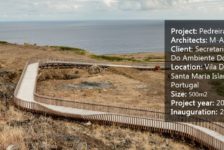Last time I ran through the basics of what I need. Now it’s time to really start picking components to build my system.
Component #1: Processor

I would start picking components with the processor. This is one of the components that is tougher to upgrade once a machine is built, and you need to make sure you get what you want. I am going to go with the i5-3450, which Toms Hardware ranked (in September 2012) as the best processor for the $150-$200 price range. I went with this over a slightly cheaper or more expensive one for a few reasons. In terms of more expensive options, the next-best choice up is not $40 better on the surface, but when you get into overclocking and things of that ilk. I have no plans to go there with this rig, so that’s wasted cash basically. Beyond that, you get to diminishing returns, and to get a modest increase in performance, you could either tune a $240 chip, or buy a $1000 chip. It seems the bottlenecks start to lie else where in the system at that point. I also generally wouldn’t go to the next tier of processor down, since as I mentioned before, apart from overclocking your processor, you cannot easily upgrade your processor, so spend the cash for quality parts now.
Component #2: Motherboard
 Next up is finding the motherboard you need. It needs to fit the processor you have picked, have expansion room for the graphics/WiFi cards you want now, plus possible expansion, and be able to support the RAM load you will want. It also needs to have the ports for things like USB’s and HardDrives that you want. Make sure the connector types you want (USB 3.0, SATA III) are supported. This is honestly the weakest part of my component understanding, and I tend to really scour NewEgg and Toms Hardware for recommendations, in general, and as a match for my specific processor.
Next up is finding the motherboard you need. It needs to fit the processor you have picked, have expansion room for the graphics/WiFi cards you want now, plus possible expansion, and be able to support the RAM load you will want. It also needs to have the ports for things like USB’s and HardDrives that you want. Make sure the connector types you want (USB 3.0, SATA III) are supported. This is honestly the weakest part of my component understanding, and I tend to really scour NewEgg and Toms Hardware for recommendations, in general, and as a match for my specific processor.
Motherboards are also very important because the motherboard size will determine what case sizes you can use. I managed to find a few Micro ATX boards that should still give pretty great performance, while allowing me to look at a smaller form factor. I went with the GIGABYTE G1.Sniper M3 because it offers a few more connections I was looking for, for not much price increase.
Component #3: Case
 This is a tricky pick for very different reasons then the rest of the components. This is the part that you will be looking at day in, and day out, for the next several years. Unless you choose a case with a window, you’ll never see the rest of the parts you pick apart from an occasional can-of-air clean out. You also need it to handle the various parts you want. Because of this, I went with Fractal Design’s Define Mini. It has a clean black look, is designed to keep your system quite, but if heat becomes an issue it has openings you can open, allowing more noise out, but more air in, even adding additional fans as needed.
This is a tricky pick for very different reasons then the rest of the components. This is the part that you will be looking at day in, and day out, for the next several years. Unless you choose a case with a window, you’ll never see the rest of the parts you pick apart from an occasional can-of-air clean out. You also need it to handle the various parts you want. Because of this, I went with Fractal Design’s Define Mini. It has a clean black look, is designed to keep your system quite, but if heat becomes an issue it has openings you can open, allowing more noise out, but more air in, even adding additional fans as needed.
Component #4: RAM
Because the motherboard I selected runs the RAM in dual channel, you want 2 or 4 sticks of RAM in at a time to allow them to run at the fastest speeds possible. I have used Corsair memory a few times, with no complaints, and selected one of their 8Gb packages, the Corsair Vengeance. It runs at the max speed my motherboard can handle (1600), and would allow me to buy another pair later to up to 16 Gb if I wanted, although that may well not happen unless this turns into more of a 3D graphics rig than it is currently intended to be.
Component #5: Graphics Card

For the graphics card, I am going with a mid-line choice, but that could be run in tandem with a second card to create a workhorse in the future. One of the best choices according to TomsHardware is the GeForce 560 from NVidia, coming in at “just” $170. Not only is it a great card on it’s own, but it also got an honorable mention as one of the best cards for ~$330 when run in tandem(called SLI for Nvidia cards, and Crossfire for ATI cards. There are some differences in how they run, but unless you are going pretty high end, you likely won’t see a huge difference.). I doubt that will be an option I will go with in the future, but it’s good to plan for it now. The card is normally $179, but at the time that I’m writing this, there is a $20 mail in rebate. You have to remember to file it, but it’s things like these that REALLY help, as that basically bought you your DVD drive.
Next Time: Components II
Published in Blog









